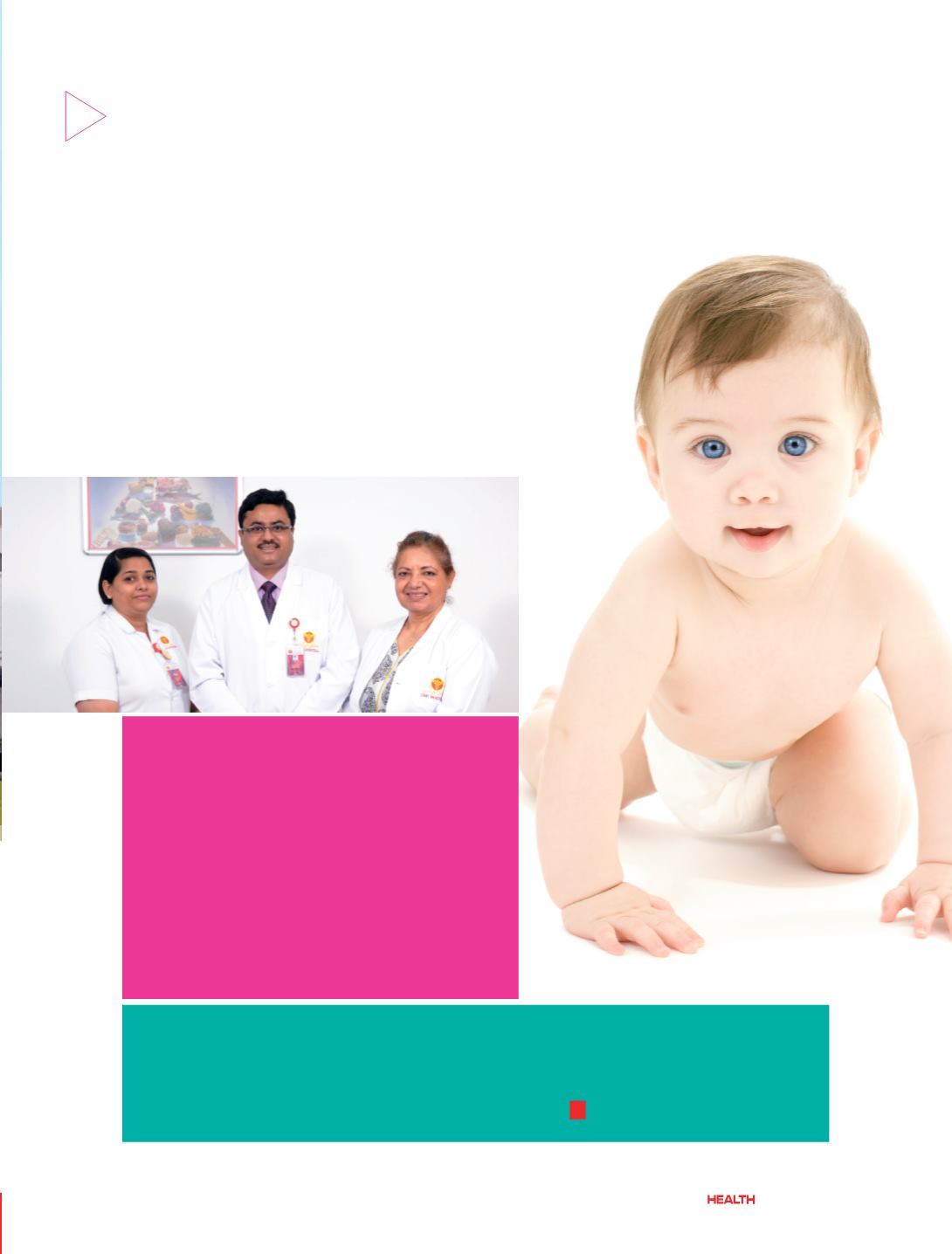

H
Today
Dr. Zareen and Dr. Lalit have seen him twice post discharge and points out he
has gained 500 grams since discharge. Both doctors feel the baby has done
exceptionally well and is well on his way to recovery.
Anesthesia
The surgery was done under
general anesthesia which Dr. Lalit
tells is a first for a baby of just
12 days of age at our hospital.
He adds, “Every aspect of this
surgery had its own set of risks
we could have lost the baby at any
point but there were concerted
efforts of the nursing department,
anesthesia department, the
pediatric department, as well as the
obvious inputs from the surgery
department.”
The Surgery Details
The liver was brought back
surgically and the hole in the
diaphragm was closed which
is called Primary repair of the
diaphragm just using sutures.
Beyond that, Dr. Lalit explains
the lung was also expanding well
which is good. “Once the liver is
brought back, we put in a plastic
tube into the chest called a chest
tube in case the baby develops
fluid or air and all intestines were
brought back into the abdomen
and the abdomen was closed with
sutures,” he says. The baby did
quite well and was on a breathing
machine initially and well taken
care of by the neo-natal unit with
excellent care.
Prof.Dr. Zareen
adds after the high risk surgery
was the phase of critical post-
operative period with the baby on
Great Teamwork
In particular, Dr. Zareen commends the marvelous job
the nursing department did, both pre-operatively and
post operatively, as well as the very experienced pediatric
surgeon. She tells, “Whatever we can do, if the nursing
team is not up to mark, there can be potential problems.
Certain special things were required from our nurses;
one was minimal handling of the baby, proper ventilator
care, and then of course special feeding instructions as
this baby was not fed orally for 13 days. The technique of
feeding was very gradual and slow and minute by minute.
Some of the babies with this kind of diagnosis have other
associated problems but fortunately this baby did not.”
mechanical ventilator support,
fully sedated and paralyzed so
that the wounds would heal
nicely and for the lungs to expand
properly. Also not forgetting, the
slow and gradual feeding and
fluids and electrolyte balance to
be taken care of.
29
May/June 2015















